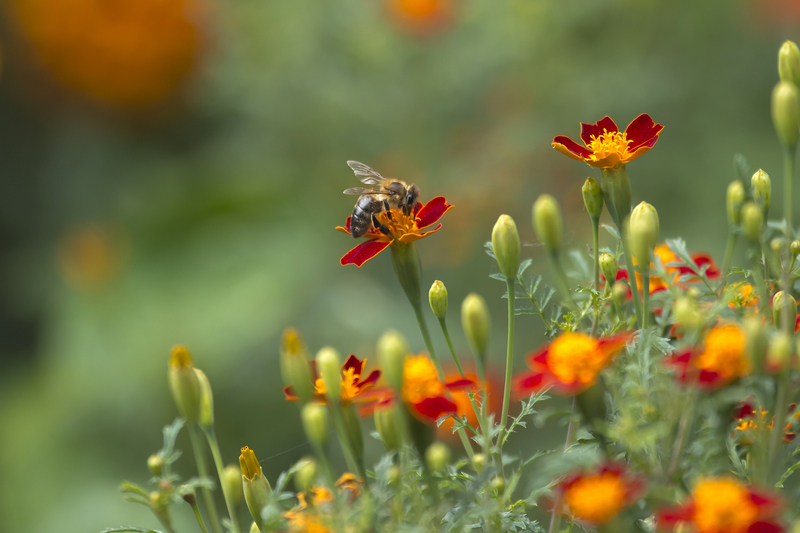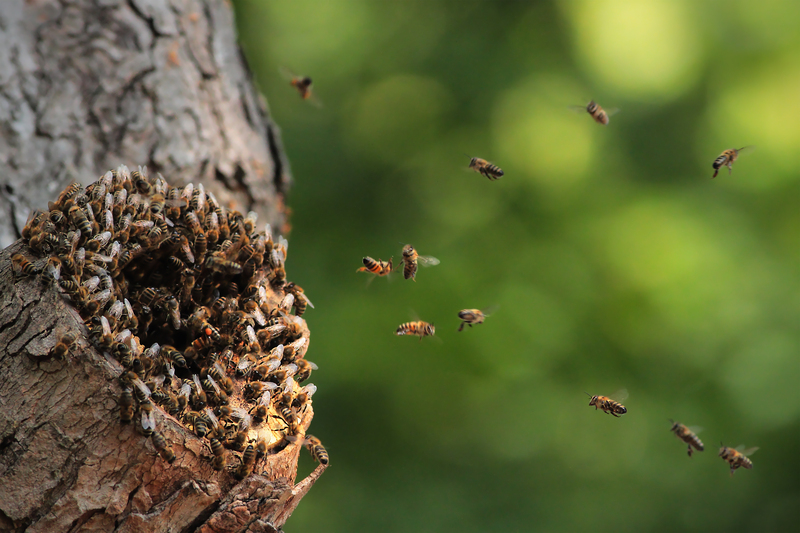Elevate Your Home with Well-Cared Orchids
Posted on 17/06/2025
Elevate Your Home with Well-Cared Orchids: A Comprehensive Guide
Incorporating orchids into your home is one of the most effective ways to add beauty, elegance, and vibrancy to any space. An array of exquisite colors, forms, and fragrances make orchids a favorite among both amateur gardeners and seasoned plant enthusiasts. But to truly elevate your home with well-cared orchids, you need more than just a beautiful bloom--you need knowledge, care, and the right environment.
This comprehensive guide will provide everything you need to know about growing, nurturing, and displaying healthy orchids to transform your living space. We'll walk you through choosing the right varieties, cultivating ideal conditions, maintaining proper care routines, and showcasing your plants as stunning decor elements.

Why Orchids are the Perfect Choice for Home Enhancement
Orchids are synonymous with sophistication and natural artistry. Here's why choosing well-maintained orchids for your home is an investment in style, health, and tranquility:
- Aesthetic Versatility: Orchids come in countless colors, shapes, and sizes, complementing any decor theme--from minimalist to bohemian.
- Long-lasting Blooms: Many orchid varieties offer blooms that can last several weeks or even months, providing enduring beauty with minimal effort.
- Air Improvement: Like many houseplants, orchids help purify indoor air by absorbing pollutants and releasing oxygen.
- Stress Reduction: Studies show that being surrounded by healthy, blooming plants like orchids can reduce stress and boost mood.
Understanding Orchid Varieties: The Foundation for a Thriving Collection
One of the first steps to elevate your home with orchids is identifying which species will thrive in your environment. Popular types include:
- Phalaenopsis (Moth Orchid): Elegant and forgiving, ideal for beginners. Blooms can last for months with proper care.
- Cattleya: Known for their showy and fragrant blossoms. These are perfect for adding a touch of drama.
- Dendrobium: Offers sleek, often tall stems and numerous flowers. These orchids can fit well on shelves or window ledges.
- Oncidium (Dancing Lady Orchid): Named for their lightly scented, fluttery flowers. Adds movement and texture to displays.
- Vanda: Renowned for their intense colors and vibrant patterns. Best for bright, sunny spots.
Consider your space's light, humidity, and temperature before picking an orchid. Matching an orchid species to your home's conditions is the first step toward well-cared orchids that will thrive and adorn your space.
The Essentials of Orchid Care for Stunning Home Displays
To elevate your home with well-cared orchids, a basic understanding of their needs is crucial:
- Light: Most orchids prefer bright, indirect sunlight. Direct midday sun can scorch their delicate leaves, while too little light hinders blooming.
- Water: Overwatering is a common mistake! Orchids need a well-draining potting mix and should be watered only when the medium starts to dry out--typically every 5-7 days.
- Humidity: Orchids thrive in humid environments (ideally 50-70%). In dry homes, place a water tray near your plants or use a humidifier.
- Temperature: Indoor orchid varieties generally enjoy daytime temperatures of 65-75?F (18-24?C) and slightly cooler nights.
- Air Circulation: Good airflow helps prevent fungal and bacterial problems. Avoid placing orchids in stagnant or unventilated spaces.
Advanced Orchid Care: Tips for Flourishing Blooms
- Fertilizing: Feed your orchids with a balanced, water-soluble fertilizer (20-20-20) every 2-3 weeks during their growing season. Dilute to half the recommended strength to avoid root burn.
- Repotting: Orchids should be repotted every one to two years, preferably after blooming. Use fresh, specialized orchid bark or sphagnum moss.
- Pruning: After the blooms fall, trim back the flower spike just above a node to encourage new growth.
- Pest Management: Monitor for signs of pests such as mites, mealybugs, or scale--remove invasions promptly with a damp cloth or gentle soap solution.
An understanding of these advanced techniques ensures healthy orchid plants that will not only survive but thrive and elevate your interior design.
Displaying Orchids: Transforming Your Interior Aesthetics
Strategic placement and creative displays can turn your well-cared-for orchids into living art. Here's how:
- Centerpieces: Place a single orchid in a decorative pot as your dining or coffee table focal point.
- Window Sills: Orchids generally love filtered light, making east- or west-facing windows ideal display spots.
- Bathroom Retreat: The naturally higher humidity in bathrooms is a big bonus for orchids--turn your space into a tropical oasis.
- Floating Shelves: Install shelves near light sources to create a cascading orchid display that draws the eye upward.
- Hanging Baskets: Some orchid varieties, particularly Vandas, flourish in hanging baskets--perfect for adding a sense of height and drama.
Remember, well-cared-for orchids will reward you with lasting blooms only if their basic lighting and humidity needs are met in these display locations. Always observe how your orchid responds and relocate it if needed for optimal growth and health.
Orchid Decor Trends for Modern Homes
- Minimalist Spaces: Use white phalaenopsis orchids in geometric pots for a simple, tranquil vibe.
- Bohemian Retreats: Cluster colorful dendrobiums in woven baskets with other foliage plants.
- Luxury Spa Bathrooms: Group fragrant cattleyas next to rolled towels and candles.
- Urban Gardens: Install a vertical wall garden and fill pockets with different orchid species for a dynamic, living wall effect.
Embracing these trends can elevate your home with the timeless beauty of orchids, enhancing not just style, but also serenity within your indoor space.
Solving Common Orchid Care Challenges
Even experienced growers can encounter a few setbacks. Here's how to tackle the most frequent orchid issues:
1. Why Won't My Orchid Bloom?
- Insufficient Light: If your orchid's leaves are a dark green instead of bright apple green, it likely needs more light.
- Improper Watering: Soggy roots can prohibit flowering. Stick to a watering routine that allows the roots to dry between waterings.
- Nutrient Deficiency: Use orchid-specific fertilizer during active growth for robust, repeat blooms.
2. How to Revive a Droopy Orchid
- Check the roots: Healthy orchid roots are firm and green or white. Mushy or brown roots indicate rot--remove and repot your plant.
- Humidity boost: Mist lightly or group plants together to maintain a humid microclimate.
3. Dealing with Pests and Diseases
- Quarantine new plants: Prevent pest outbreaks by keeping new orchids isolated for a couple of weeks.
- Clean leaves regularly: Wipe leaves with a damp, soft cloth to keep dust and insects at bay.
- Use neem oil: An eco-friendly solution for persistent pests.
Proactively monitoring and maintaining your orchids' health is key to ensuring that your home always looks its best.
The Benefits of a Home Filled with Thriving Orchids
There is much more to raising orchids at home than decorating your space. Orchids can:
- Improve Focus and Productivity: Studies show that exposure to thriving houseplants, such as orchids, enhances concentration and creativity.
- Provide Clean Air: Orchids help remove toxins and provide fresh oxygen to your indoor environment.
- Inspire Calmness: The process of caring for orchids introduces mindfulness and stress relief into your daily routine.
Well-tended orchids are more than just showpieces--they become cherished members of your household, bringing joy with each new bloom.

Frequently Asked Questions about Caring for Orchids at Home
How often should I water my orchid?
Water once a week on average, allowing the potting mix to dry out between waterings. Frequency can vary depending on humidity, temperature, and pot size.
Can I grow orchids if my home has low natural light?
Yes! Some orchids, like the Phalaenopsis, adapt well to lower light. Supplemental grow lights can also help maintain vibrant, healthy orchids in shadier rooms.
What is the best potting mix for orchids?
Use an open, airy potting mix such as bark chips, coconut husk, or sphagnum moss. These materials ensure essential airflow and prevent root rot.
What should I do if my orchid leaves turn yellow?
Yellowing leaves could result from overwatering, inadequate light, or natural aging. Assess your care routine and adjust accordingly.
Conclusion: Elevate Your Home with Well-Cared Orchids
Transforming your home into a lush oasis with well-cared orchids is both rewarding and achievable, whether you're a skilled gardener or a budding plant parent. By selecting the right species, developing a tailored care routine, and thoughtfully displaying these living jewels, you'll not only beautify your surroundings but also enjoy improved well-being inside your home.
Remember, the most breathtaking orchid displays begin with consistent, thoughtful care. Nurture your orchids with patience, attention, and the tips above. Soon, your home will radiate with unrivaled beauty and tranquility, courtesy of your flourishing orchid collection.
Ready to elevate your home with well-cared orchids? Start today, and watch your living space bloom with color and elegance!

